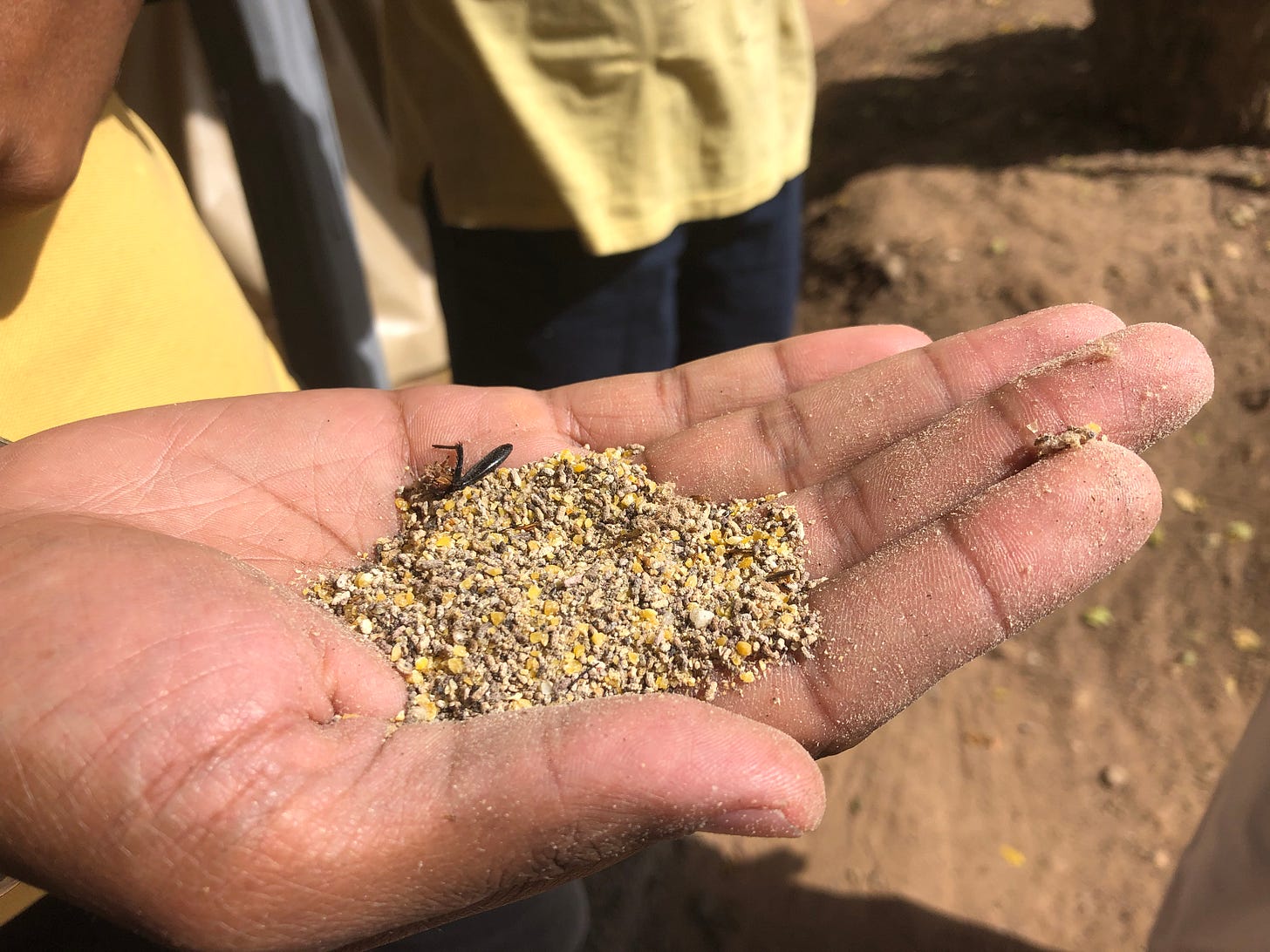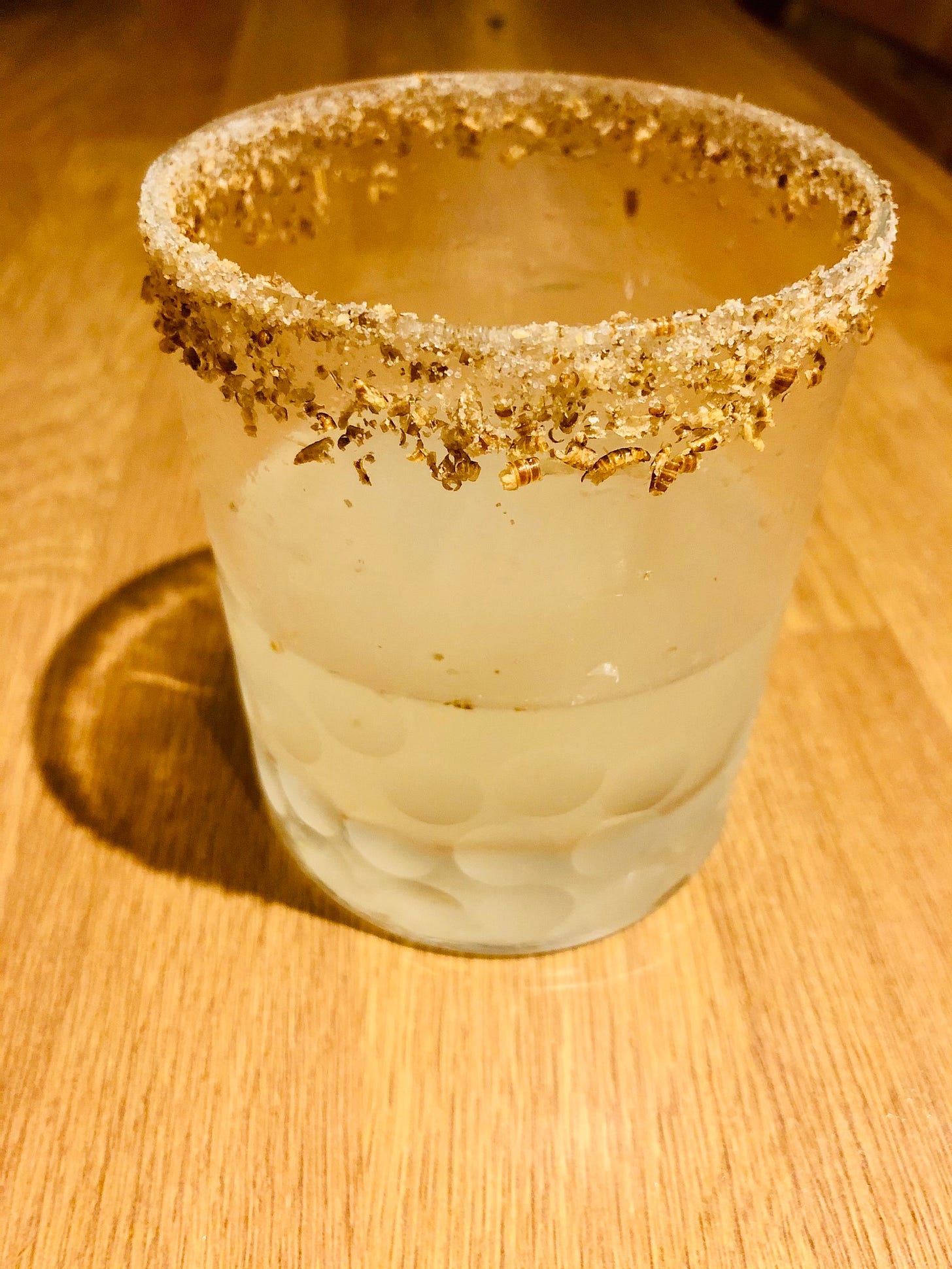Buzzing: Insect manure is good stuff
Hello everyone, how are you keeping? Buzzing has treated itself to a brand new look; I hope you like it as much as I do.
This week in Buzzing:
Insect manure is good stuff
Test Corner: Mealworm Margarita. Cheers!
Today, I want to talk to you about poo. Insect poo to be precise. Like all animals, insects poo, and their manure, like all other animal manure, is a rich source of nutrients. Frass, to give insect manure its proper name, is in fact a powerful fertiliser, which could help replace reliance on traditional chemical fertilisers (NPK).
I first heard of frass when I visited Valala Farms in Madagascar back in June 2019; at the time, the farm was running trials on its own veggie patch. They have since run extensive trials with commercial growers, orchards, plant nurseries and even reforestation efforts, which have all shown tremendous potential. Missouri Botanical Gardens, who are using Valala Farms’ frass for their native reforestation trials in Madagascar, found that trees planted on plots with frass grew between two and eight times taller (depending on the species) than those on plots without frass.
I saw frass mentioned many times over the following months, until I attended a cooking course at Horizon in December 2019, in which Tiziana Di Costanzo casually mentioned that she’d had a bumper crop of squashes and pumpkins that year thanks to frass from their urban mealworm farm. My husband and I have an allotment, so this was music to my ears. I promptly bought a couple of kilos of the stuff, ready for the next growing season.
Di Costanzo’s experience is definitely backed up by science. When I visited the International Center for Insect Physiology and Ecology (ICIPE) in Kenya in February last year, lead Black Soldier Fly researcher Chrysanthus Tanga shared with me the results of their frass trials on tomatoes, French beans and kale (all of which we grow at the allotment): it showed that a straight substitution of NPK with frass achieved more or less the same yields, but that a 50:50 mix of frass:NPK achieved a significant increase in yields, especially for tomatoes. I was so excited I actually texted the slide from the presentation to my husband with the message: “Bring on the Gazpacho!”.
We have used frass on our allotment last year but it wasn’t exactly done with the scientific rigour of a controlled trial. We were especially fuzzy on dosage and application method, so even though it was a good year, I think it had more to do with my husband’s hard work than the frass alone.
Anyway, my point is that frass, like insect protein, is a new product and its adoption will take time. Much in the same way that I am experimenting with insect products in the kitchen, we’re experimenting with frass at the allotment (apparently we need to brew a “tea”). And these experiments are being done at much larger scale by commercial companies and academia. One promising sign is that French mealworm company Ÿnsect has already signed commercial contracts for frass, even though its factory won’t be completed until 2022.
Frass still needs to be recognised as a product in European legislation but it’s on the regulator’s to-do list, and not far off the top: using frass as a biofertiliser not only reduces waste and recycles nutrients, it also generates additional revenues for insect farms. It’s a win-win scenario, and one with which few people seem to take issue.
Test corner: Mealworm Margarita
Last edition was all about the kids, so this week, I thought I’d try something a little more grown-up with an insect cocktail. Reader, it was a good idea.
The recipe for the Mealworm Margarita is courtesy of Eat Grub. Their recipe mentions that the mealworm would replace the cumin you’d put in the salt for the rim, and I loved the idea that mealworms would be used for their flavour rather than their protein content for once.
And it really works: I love a margarita anyway, but the mealworm salt adds a great salt-of-the earth flavour. As you can see from the picture, I probably could have done a better job of grinding the mealworms down to a finer powder but I don’t have a spice grinder and my general purpose blender only went so far (this could easily be solved by either blending larger quantities or using mealworm powder directly). Once I’ve nailed that (and got myself some proper Margarita glasses), I’ll definitely be serving these at the next party (whenever that is…).
Hi, I’m Emilie Filou, a freelance journalist. I specialise in business and sustainability issues and have a long-standing interest in Africa. If you liked Buzzing, please share with friends and colleagues, or buy me a coffee. The artwork in Buzzing was designed by Sheila Lukeni.






